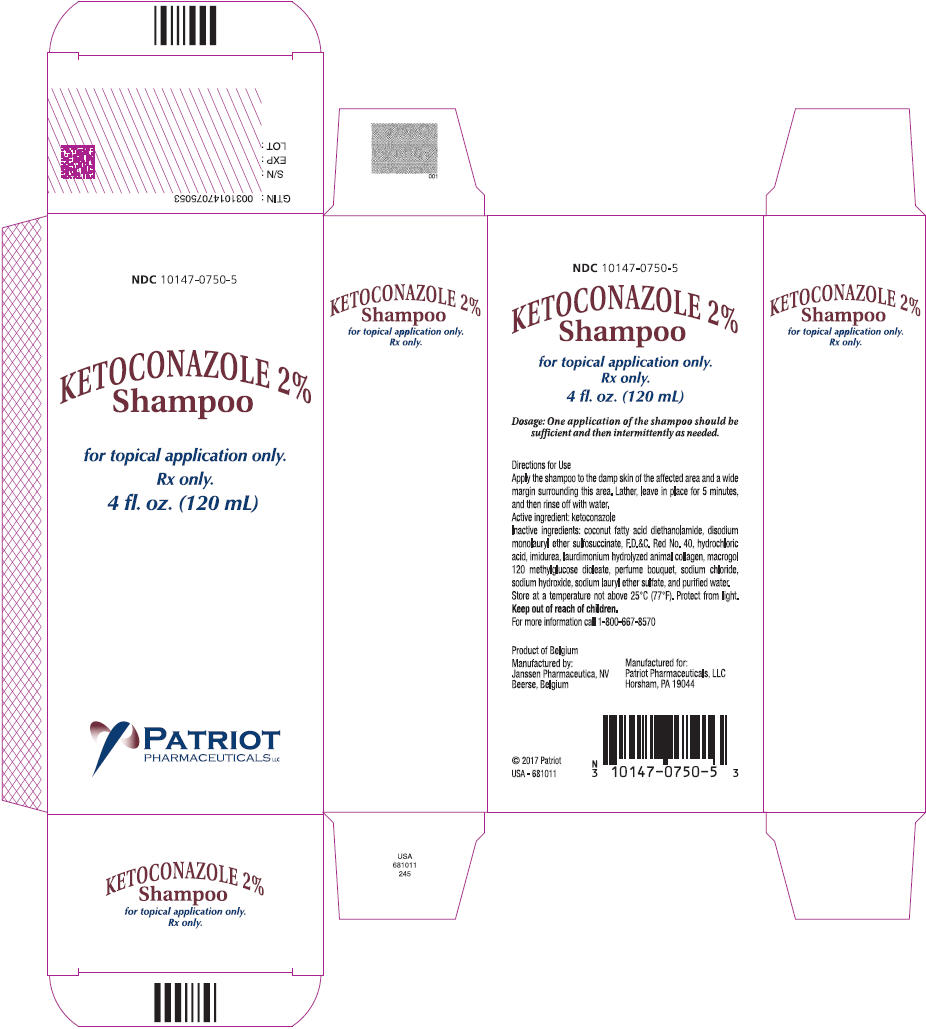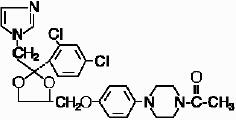Ketoconazole Shampoo while Breastfeeding

What is Ketoconazole Shampoo used for?
Is Ketoconazole Shampoo usage safe while breastfeeding? If a lactating mother is using it can there be any effect on growth or development of infant?

Nursing mothers: There are no adequate and well-controlled studies in nursing women. Ketoconazole is not detected in plasma after chronic shampooing on the scalp. Caution should be exercised when ketoconazole 2% shampoo is administered to a nursing woman.
Ketoconazole Shampoo Breastfeeding Analsys
Ketoconazole while Breastfeeding
SafeCAS Number: 65277-42-1
A high protein-binding capacity may explain its low excretion into breastmilk observed after oral administration. Low levels that would reach the infant’s gut through breastmilk would barely be absorbed due to the alkaline environment that hinders the absorption. Because it is topically used on creams or vaginal ovules, it would have a low or nil absorption in mother’s plasma (Ene 1984, AEMPS 2015), hence, the amount excreted in milk is expected to be even lower than that following a systemic administration. It would be wise to avoid applying creams, gels and other topical products containing paraffin (mineral oil) on the nipple so that the infant could not ingest it (Noti 2003, Concin 2008). American Academy of Pediatrics: medication usually compatible with breastfeeding.
Ketoconazole Shampoo Breastfeeding Analsys - 2
Ketoconazole while Breastfeeding
CAS Number: 65277-42-1

Because there is little published experience with ketoconazole during breastfeeding and its potential liver enzyme inhibition and liver toxicity, other agents may be preferred. However, if oral ketoconazole is required by the mother, it may not be a reason to discontinue breastfeeding.[1] Taking the dose just before the infant's longest sleep period or avoiding breastfeeding from 2 to 5 hours after the dose might decrease the infant's exposure to ketoconazole. Use of ketoconazole shampoo or topical use on the skin by the mother poses little or no risk to the breastfed infant.[2][3] However, topical use on the breast or nipples should be avoided in nursing mothers because of possible oral ingestion by the infant and the availability of safer alternatives. Only water-miscible cream or gel products should be applied to the breast because ointments may expose the infant to high levels of mineral paraffins via licking.[4]
What should I do if I am breastfeeding mother and I am already exposed to Ketoconazole Shampoo?
As usage of Ketoconazole Shampoo is mostly safe while breastfeeding hence there should not be any concern. In case of any change in behavior or health of your baby you should inform your health care provider about usage of Ketoconazole Shampoo else no further action is required.
I am nursing mother and my doctor has suggested me to use Ketoconazole Shampoo, is it safe?
Usage of Ketoconazole Shampoo is safe for nursing mothers and baby, No worries.
If I am using Ketoconazole Shampoo, will my baby need extra monitoring?
No
Who can I talk to if I have questions about usage of Ketoconazole Shampoo in breastfeeding?
US
National Womens Health and Breastfeeding Helpline: 800-994-9662 (TDD 888-220-5446) 9 a.m. and 6 p.m. ET, Monday through Friday
UK
National Breastfeeding Helpline: 0300-100-0212 9.30am to 9.30pm, daily
Association of Breastfeeding Mothers: 0300-330-5453
La Leche League: 0345-120-2918
The Breastfeeding Network supporter line in Bengali and Sylheti: 0300-456-2421
National Childbirth Trust (NCT): 0300-330-0700
Australia
National Breastfeeding Helpline: 1800-686-268 24 hours a day, 7 days a week
Canada
Telehealth Ontario for breastfeeding: 1-866-797-0000 24 hours a day, 7 days a week
